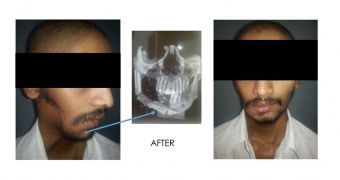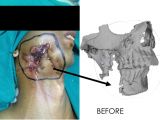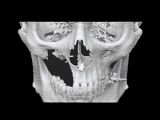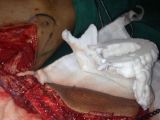Cancer is nasty business, especially when it's of the malignant sort. Tumors are better or worse than non-localized strains, depending on what experts you ask. In any event, they are something everyone wants to see the end of, with good reason. Osteo3d is now helping that along.
Osteo3d is a healthcare platform from df3d. It provides surgeons and other doctors with models of body parts, or allows them to make their own.
At present, ultrasound scans, MRI scans or other ways of producing images of the human body are used in diagnostics and the planning of surgeries or other treatments.
In recent years, however, hospitals have proven quite receptive to 3D printed models. Based on data from those scans we mentioned before, they very accurately show doctors what they are dealing with.
This permits for much better surgery planning and anticipation of issues that might arise during a high-risk operation.
Mr. P freed of cancerous tumors located in his jaw
Mr. P is the codename, so to speak, of an Indian patient who suffered from both benign and malignant tumors, located in his jaw. Face cancer is among the worst sorts of cancer, if degrees of comparison can even be applied to such conditions.
Benign tumors are, by nature, less likely to emerge again, but malignant cancer can start up again after removal a lot more easily.
That meant that a fair bit of flesh had to be removed from the surrounding area, which brought with it a secondary but nonetheless important concern: disfiguration.
The 3D model of the jaw will be used to plan reconstruction surgeries as well
Tumor removal would have left Mr. P's face deformed even without the extra flesh taken out alongside them. This posed significant threat to his chances of future employment. Prejudice on the job marketplace is as real as everywhere else, however much man might like to look the other way.
Normally, it's hard to reconstruct the jaw. The conventional process uses the fibula supporting bone from the lower limb to sculpt a makeshift replacement. Using a 3D printed surgical model from Osteo3d allowed the medics to immediately recreate the proper shape and calculate the best bone contour.
In the past, it was very hard to contour the replacement bone properly, and even the most care seldom resulted in a perfect substitute, if ever. True, the result still wasn't totally perfect, but considering the alternative, it's nearly a miracle how it all turned out in the end.
The success may be enough to get hospitals from outside India to call on the services of Osteo3d. After all, not many outfits describe themselves exclusively as makers of customized 3D printed surgical guides, rather than providing broader services.

 14 DAY TRIAL //
14 DAY TRIAL // 



